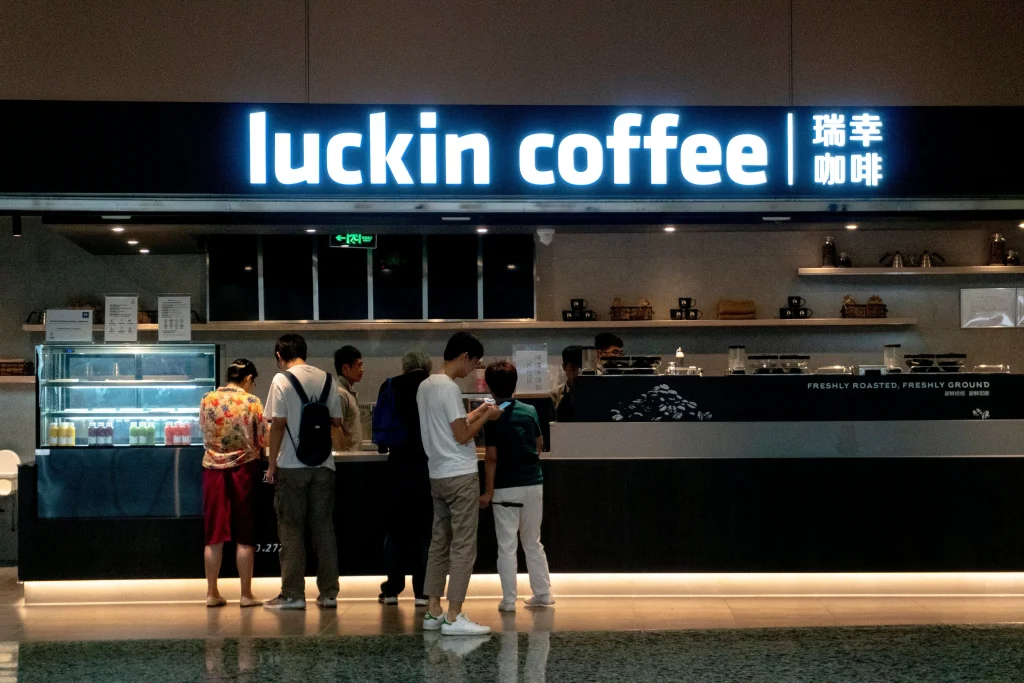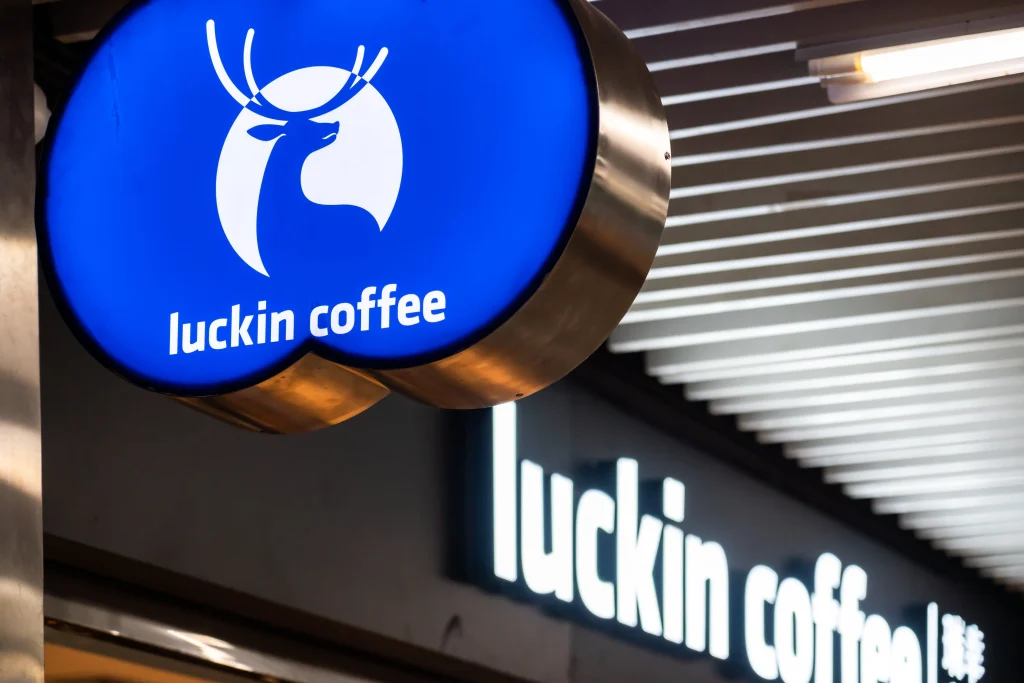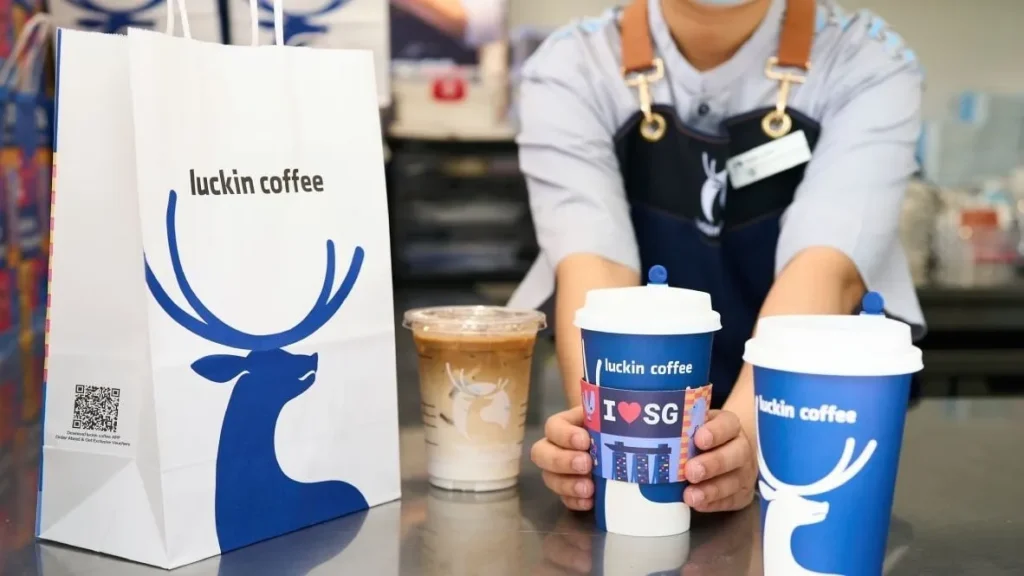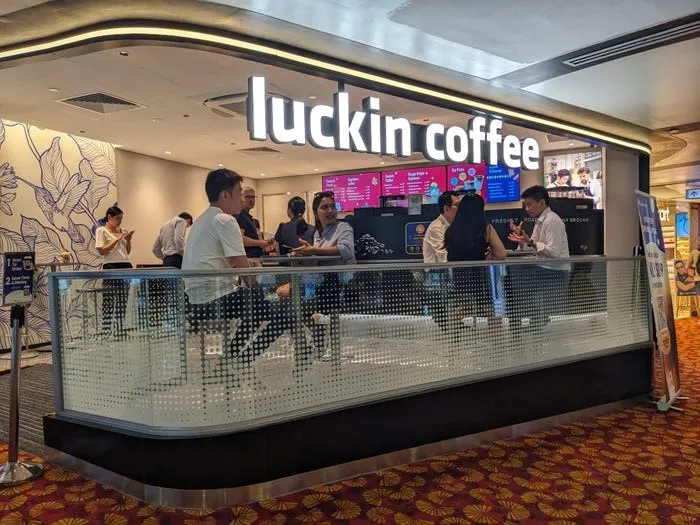Defying the odds and overcoming a severe accounting scandal, Luckin Coffee has emerged as China’s largest coffee retailer, surpassing even Starbucks. This stunning turnaround comes just four years after revelations of widespread fraud led many to predict the company’s downfall.

Once derided as a low-cost imitator of Starbucks, Luckin Coffee is now a powerhouse in China’s competitive coffee market. The company’s resurgence is driven by its budget-friendly lattes, which have become immensely popular among cost-conscious consumers. This remarkable recovery underscores how rapidly evolving local strategies can challenge global giants in China’s dynamic consumer landscape.
Luckin’s strategic focus on efficiency and technology has been pivotal to its revival. Central to its business model is the use of labor-saving automation and digitization, which significantly reduce costs and streamline operations. Former senior vice president Zang Zhongtang highlights that these innovations remain the backbone of Luckin’s growth. “The design of the business model, despite the earlier missteps, was fundamentally sound,” says Zang, now an executive at China’s NaaS Technology Inc.

The company’s cashless, takeout-only kiosks proved particularly effective during the Covid-19 pandemic, aligning perfectly with strict lockdown measures that limited in-person interactions. Post-pandemic, these convenient and affordable coffee options have become a favorite among younger Chinese consumers who seek quick, budget-friendly alternatives to Starbucks’ more leisurely and expensive coffee experience.
Luckin’s rapid expansion has also played a critical role in its success. Over the past year, the chain has doubled its store count to over 18,500 locations, extending its reach beyond China’s largest cities into smaller, less penetrated markets. This aggressive expansion strategy has allowed Luckin to tap into a broader consumer base, including the traditionally tea-drinking populace in China’s hinterlands.

To appeal to local tastes, Luckin has tailored its menu to include beverages that cater to preferences for sweet and milky flavors. This localization strategy has been instrumental in attracting a wide range of customers and differentiating itself from Starbucks.
Luckin’s affordable pricing strategy is another key factor in its success. With coffee prices as low as 9.9 yuan ($1.37), the chain has attracted a loyal customer base that values affordability and convenience over the premium ambiance typically associated with Starbucks.
Competitive Dynamics and Industry Implications
Despite its challenges, Starbucks has maintained a confident stance regarding Luckin’s rise. However, recent market trends suggest that the American coffee giant may need to adapt more aggressively. In the first quarter of this year, Starbucks reported an 8% drop in sales in China, while Luckin saw a 42% increase. These figures indicate a significant shift in market dynamics.

Starbucks’ management, including CEO Laxman Narasimhan, has reiterated their commitment to the “long game” in China, focusing on sustainable growth and long-term profitability. However, the company has also started to adopt some of Luckin’s strategies, including enhancements to its mobile ordering and payment systems, areas where Luckin has excelled.
Luckin’s ability to rebound from its 2020 scandal owes much to the support of private equity firm Centurium Capital. After the fraud scandal, Centurium doubled down on its investment, providing crucial financial support that enabled Luckin to navigate legal challenges and fines. This backing was instrumental in Luckin’s successful emergence from bankruptcy in April 2022, just 14 months after filing for protection.

Centurium’s investment allowed Luckin to restructure and refocus, leading to its remarkable resurgence. With Centurium now as the controlling shareholder, the company has distanced itself from its troubled past and positioned itself as a formidable player in China’s coffee market.
Luckin Coffee’s story is a powerful example of resilience and strategic innovation. Its comeback highlights how localized business models and technological efficiencies can drive success in complex markets like China. As the company continues to expand and innovate, it sets a compelling example for both domestic and international competitors navigating the evolving landscape of the world’s second-largest consumer market.
